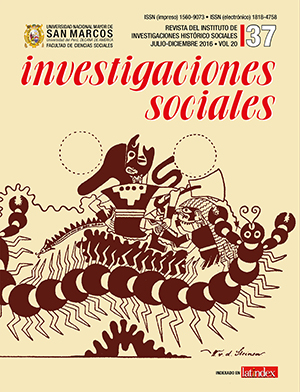Networks and spatial structure, their role in development
DOI:
https://doi.org/10.15381/is.v20i37.13475Keywords:
Transport network, spatial structures, primary-exporter model, regional developmentAbstract
Peru’s insertion, at different times in its history, in the world’s economy as exporter of raw materials had been materializing in its territory through the establishment of the technical networks. Due to their close relationship with the physical characteristics of the territory, the circulation networks have played a key role in the differentiation of the spaces at the national level, making locations accessible and articulated or otherwise marginalized. Nowadays, when the global modernization model is based on technology and knowledge and the States and regions worry about being isolated, it is essential to reflect over the challenge that represents for regional development the fact that the country’s transport system –railways and highways– was build not with the objetive to develop the economy of the regions but, fundamentally, to articulate the sources of raw material with the end markets, the regions with the hegemonic centers.Downloads
Published
Issue
Section
License
Copyright (c) 2017 Alicia Huamantinco Araujo

This work is licensed under a Creative Commons Attribution-NonCommercial-ShareAlike 4.0 International License.
AUTHORS RETAIN THEIR RIGHTS:
a. Authors retain their trade mark rights and patent, and also on any process or procedure described in the article.
b. Authors retain their right to share, copy, distribute, perform and publicly communicate their article (eg, to place their article in an institutional repository or publish it in a book), with an acknowledgment of its initial publication in Investigaciones Sociales.
c. Authors retain theirs right to make a subsequent publication of their work, to use the article or any part thereof (eg a compilation of his papers, lecture notes, thesis, or a book), always indicating the source of publication (the originator of the work, journal, volume, number and date).













